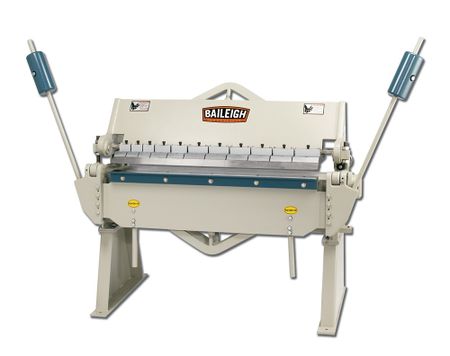Difference between revisions of "Bending Brake"
Jump to navigation
Jump to search
| Line 24: | Line 24: | ||
== Training == | == Training == | ||
=== Bending Steps === | === Bending Steps === | ||
| − | 1. Ensure that your sheet metal is thinner or equivalent to 14 gauge sheet metal, and ensure that it is less than 48" in width. | + | #1. Ensure that your sheet metal is thinner or equivalent to 14 gauge sheet metal, and ensure that it is less than 48" in width. |
| − | 2.If making a bend for a box or a pan, adjust the fingers so that the equivalent width of the fingers is just shorter than your sheet metal. | + | #2. If making a bend for a box or a pan, adjust the fingers so that the equivalent width of the fingers is just shorter than your sheet metal. |
== Safety == | == Safety == | ||
== Documentation == | == Documentation == | ||
Revision as of 18:36, 1 February 2019
A bending brake is a metalworking machine that allows the bending of sheet metal. The brake in the shop is a Chicago W31 steel box and pan brake. In a box-and-pan brake (also known as a finger brake), the clamping bar includes several removable blocks, which may be removed and rearranged to permit bending of restricted areas of a piece of sheet metal or of already partially formed pieces. After bending, a box or pan form is then completed by screw, solder, weld, rivet, or other metal fixing process.
Resources
Training
Bending Steps
- 1. Ensure that your sheet metal is thinner or equivalent to 14 gauge sheet metal, and ensure that it is less than 48" in width.
- 2. If making a bend for a box or a pan, adjust the fingers so that the equivalent width of the fingers is just shorter than your sheet metal.
